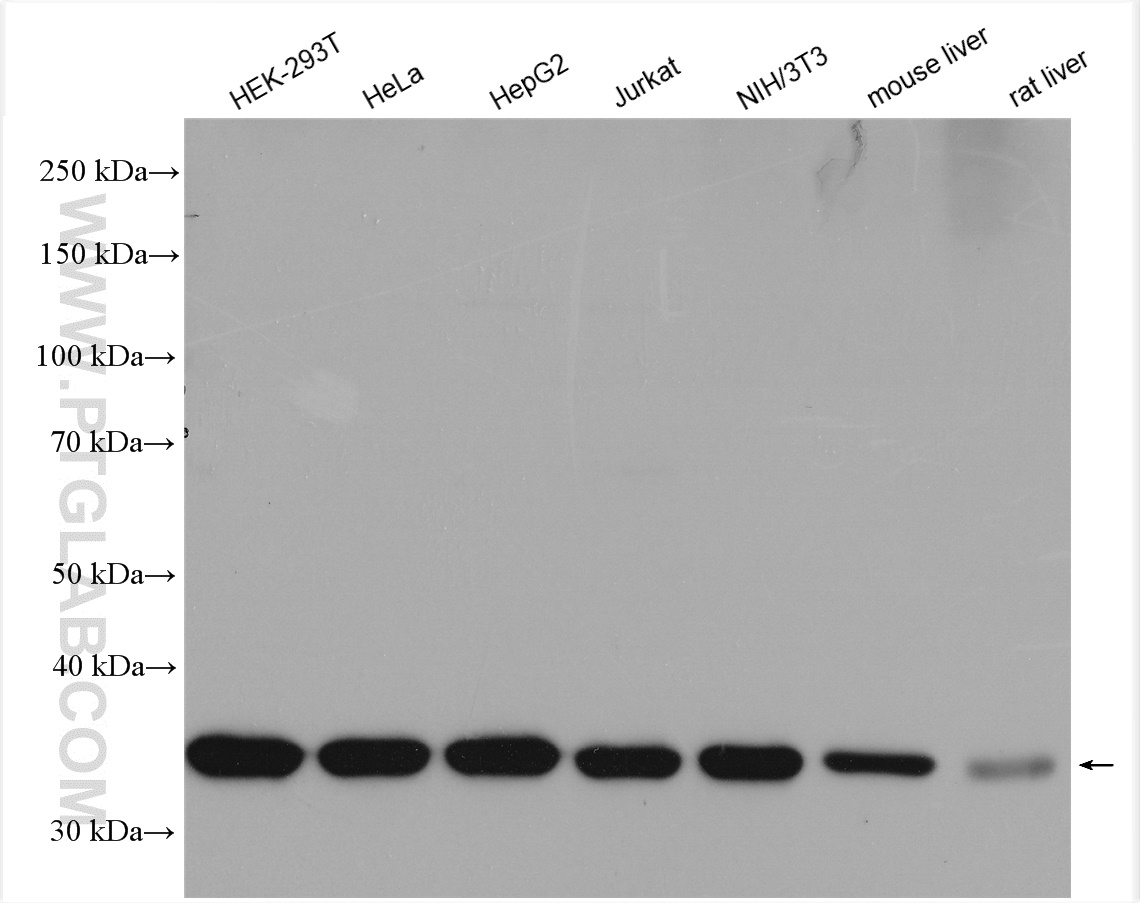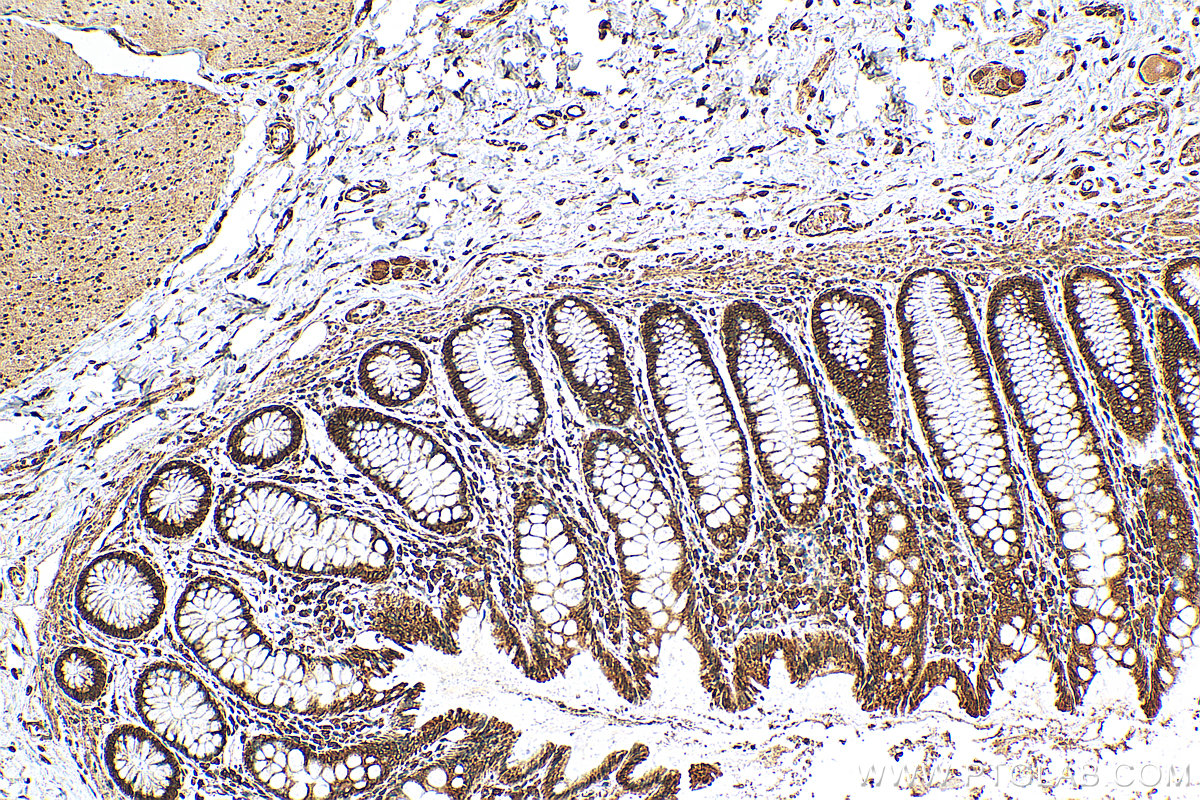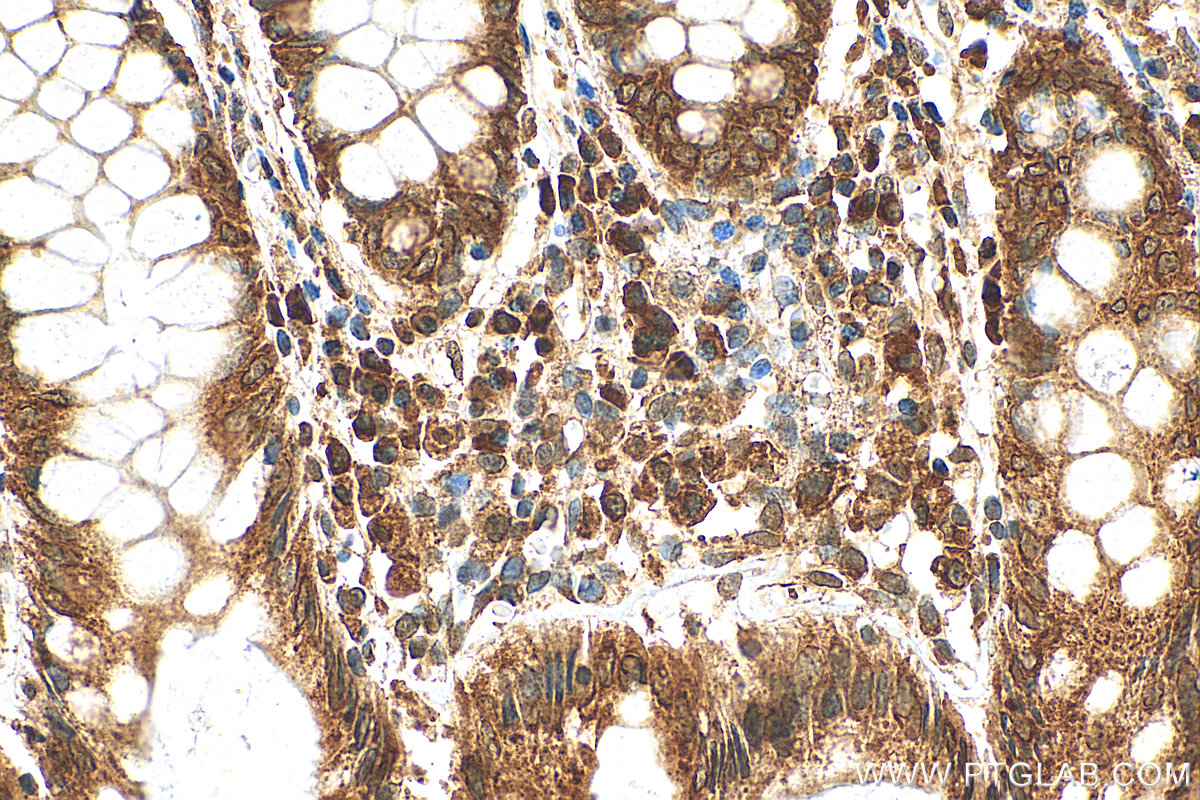验证数据展示
经过测试的应用
| Positive WB detected in | HEK-293T cells, HeLa cells, HepG2 cells, Jurkat cells, NIH/3T3 cells, mouse liver tissue, rat liver tissue |
| Positive IHC detected in | human colon tissue Note: suggested antigen retrieval with TE buffer pH 9.0; (*) Alternatively, antigen retrieval may be performed with citrate buffer pH 6.0 |
推荐稀释比
| 应用 | 推荐稀释比 |
|---|---|
| Western Blot (WB) | WB : 1:5000-1:50000 |
| Immunohistochemistry (IHC) | IHC : 1:50-1:500 |
| It is recommended that this reagent should be titrated in each testing system to obtain optimal results. | |
| Sample-dependent, Check data in validation data gallery. | |
发表文章中的应用
| WB | See 1 publications below |
产品信息
27208-1-AP targets LRRC59 in WB, IHC, ELISA applications and shows reactivity with human, mouse, rat samples.
| 经测试应用 | WB, IHC, ELISA Application Description |
| 文献引用应用 | WB |
| 经测试反应性 | human, mouse, rat |
| 文献引用反应性 | mouse |
| 免疫原 | LRRC59 fusion protein Ag26090 种属同源性预测 |
| 宿主/亚型 | Rabbit / IgG |
| 抗体类别 | Polyclonal |
| 产品类型 | Antibody |
| 全称 | leucine rich repeat containing 59 |
| 别名 | LRRC59, PRO1855 |
| 计算分子量 | 307 aa, 35 kDa |
| 观测分子量 | 35-45 kDa |
| GenBank蛋白编号 | BC052279 |
| 基因名称 | LRRC59 |
| Gene ID (NCBI) | 55379 |
| RRID | AB_2880801 |
| 偶联类型 | Unconjugated |
| 形式 | Liquid |
| 纯化方式 | Antigen affinity purification |
| UNIPROT ID | Q96AG4 |
| 储存缓冲液 | PBS with 0.02% sodium azide and 50% glycerol , pH 7.3 |
| 储存条件 | Store at -20°C. Stable for one year after shipment. Aliquoting is unnecessary for -20oC storage. |
实验方案
| Product Specific Protocols | |
|---|---|
| WB protocol for LRRC59 antibody 27208-1-AP | Download protocol |
| IHC protocol for LRRC59 antibody 27208-1-AP | Download protocol |
| Standard Protocols | |
|---|---|
| Click here to view our Standard Protocols |


